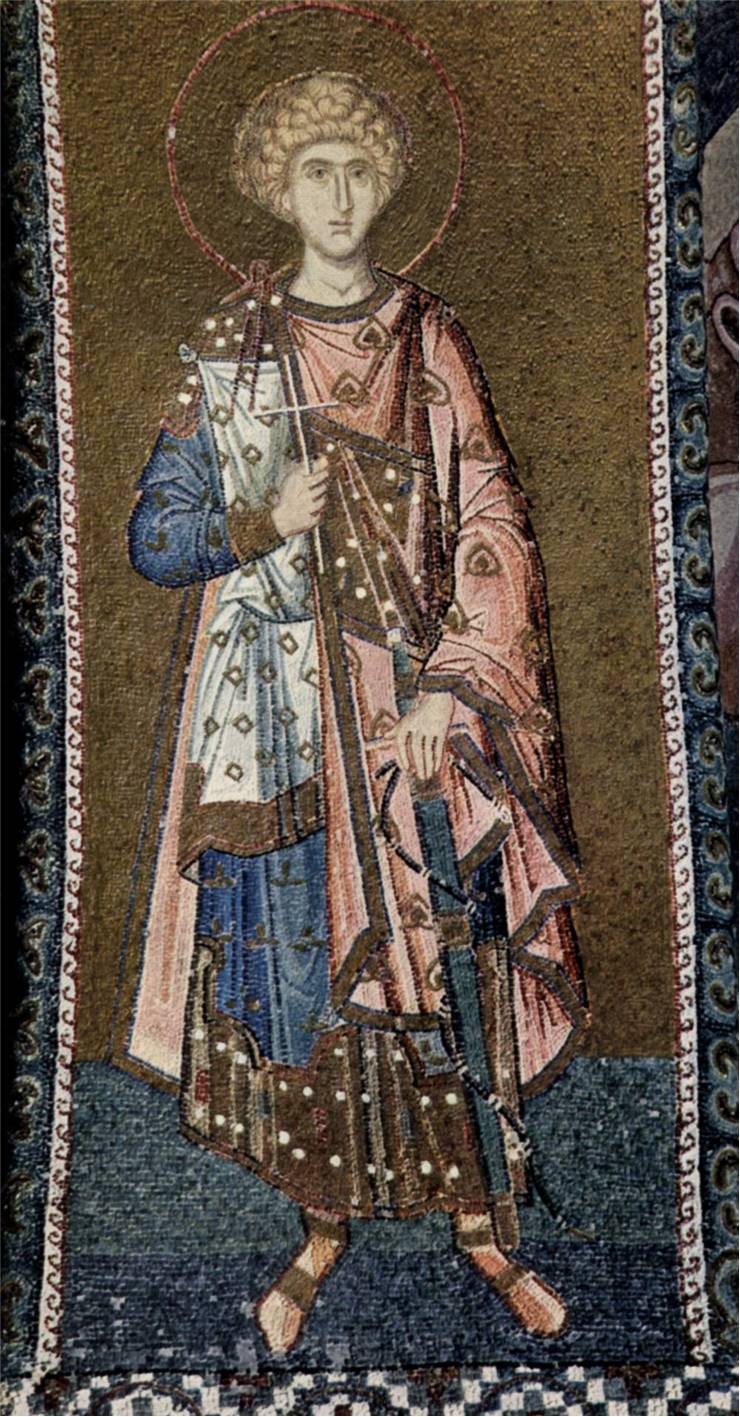Byzantine Dress - History and Facts about Byzantine Dress
Byzantine dress was very conservative under the influence of the Christian view that the body was not beautiful but sin. The Byzantines liked color and pattern and made and exported very richly patterned cloth. One of the most famous fabrics of that time and place was Byzantine silk which was woven and embroidered for the upper classes and resist-dyed and printed for the lower.
From the beginning of the Byzantine Empire a Roman toga was still used as a dress for formal and for official occasions. In Justinian time dress is changed into the tunica or long chitons, which were worn by both sexes. Upper classes wore other dalmatica over tunica, which is a heavier and shorter type of tunica. Tunica came from the ancient Roman tunica talaris, or tunic to the ankles. The most well known tunic of this type is the Coptic tunic. Tunics were worn as undergarments by every class. Only difference was in the material used for their making. Dock workers wore a himation which is very simple type of tunic made of rectangles pinned at the shoulders and belted at the waist. Superhumeral was imperial decorative collar which was copied by women of the higher classes and was one of the most recognizable parts of Byzantine clothing. Superhumeral was of cloth of gold or similar material which was studded with gems and then embroidered. A semicircular cloak called chlamys was very popular at the time. It was asymmetrical and fastened to the right shoulder to give easier access to a sword which was worn on the left. Its length varied from to the hips to to the ankles. After the 6th century the cloak was worn symmetrically. Rectangular cloaks were reserved for lower classes until the 12th century. Leggings and hose were worn but not by wealthy because they were associated with barbarians.

Female dress was made as rather shapeless clothes that were planned to last very long, even through pregnancy because fabrics were very expensive at the time and not very affordable for lower classes. Clothes were ankle-length with a high round collar and tight sleeves to the wrist. Women covered their heads by a variety of head-cloths and veils. Dresses with short sleeves or sleeveless dresses and tight wide belts were reserved for dancers. Not showing the arm above the wrist was a symbol of Byzantine modesty.
Footwear consisted of sandals, slippers and boots to the mid-calf and many were decorated in various ways. Color of footwear is very interesting. While the color red was reserved for male footwear on the court, red is the most common color used for women's shoes in the time of the Byzantine Empire.
Military uniforms were very similar to Roman uniforms. Armor was breastplate with shoulder-pieces underneath which was worn a short tunic which was overlaid with leather straps. Same straps were on upper arms. For footwear, soldiers wore calf-high boots or sandals that were highly strapped with leather straps. Military headgear consisted of simple cloth coming from below the helmet or a type of turban.
